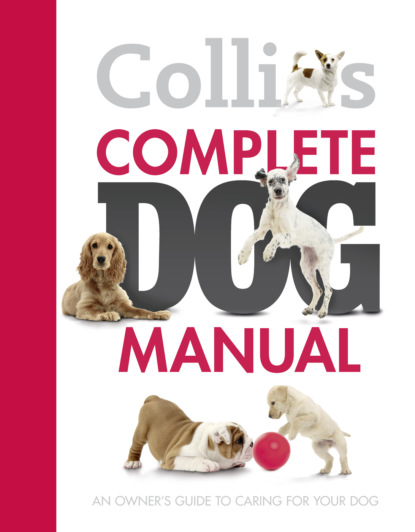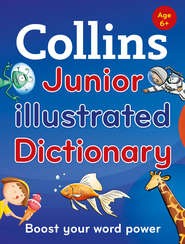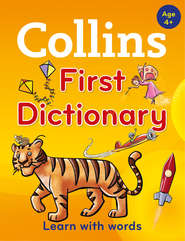По всем вопросам обращайтесь на: info@litportal.ru
(©) 2003-2024.
✖
Collins Complete Dog Manual
Настройки чтения
Размер шрифта
Высота строк
Поля
Like their owners, dogs are living longer nowadays, but few will pass seventeen years, which is eighty-four human years. The record for canine longevity is claimed for a twenty-seven-and-a-quarter-year-old black Labrador that died in Boston, Lincolnshire, though there are less reliable reports of another dog tottering up to an incredible thirty-four years!
Did you know?
Like cats, dogs are very sensitive to vibrations and they will give warning of earth tremors some time, and occasionally even days, before humans are aware of any movement in the ground. In 1853, the famous British meteorologist, Vice-Admiral Robert FitzRoy, wrote: ‘In the town of Concepción on the Pacific Coast of Chile at 11.30am the dogs fled out of the houses. Ten minutes later an earthquake destroyed the town.’
The curious thing is that dogs react like this only to the imminence of true earthquakes; somehow they can tell the difference between the advance tremors of the real thing and the 150,000 other vibrations of the earth’s crust that occur each year and that cause the animals to show not the slightest alarm. Even scientific instruments cannot tell the difference between the two kinds of tremor, so how does Fido do it? No one yet knows.
One year of a dog’s life is equivalent to seven of a man’s, or so the saying goes, but it isn’t true. A one-year-old bitch is mature and can have pups; a seven-year-old child cannot. Many dogs reach fifteen years of age but few folk celebrate their 105th birthday. A more realistic approach has been worked out by the French veterinarian, Dr Lebeau. He has suggested that the first year of a dog’s life equals fifteen human years, the second equals a further nine human years and thereafter each dog year counts for four human years. This provides us with the table shown opposite.
Toilet-Training
Wherever you put the puppy’s box, surround it with newspaper as he will not want to soil his own nest. When he is accustomed to using the paper, gradually remove some pieces and move the remainder towards the kitchen door. At the door it is then an easy matter to place it outside. Every puppy will indicate that he wants to perform, but each one is different. One may turn in little circles while another will run back and forth sniffing.
Whenever your puppy indicates that he wants to go to the toilet or finishes a meal or awakes from a sleep, put a collar and lead on him and take him outside to the place in the garden where you want him to go. Always use the same one or two words as a command and then praise him rapturously when he performs to order. Never chastise him severely when he makes a mistake in the house unless you catch him in the act. If so, use your voice, never your hand. He regards defecating, and where he wants to do it, as perfectly normal behaviour and will not understand why you are punishing him.
There are some times when the puppy should be taken into the garden, which will stimulate him to perform his toilet: first thing in the morning, after every meal, after any strenuous play, after a daytime sleep and before bed every evening. With the praise system, he should soon relate it to the required performance.
Cats and Other Pets
Do not force your new puppy to accept a cat. Holding a cat near a puppy so he can smell it is not advisable – the cat will object and it could be painful for the puppy if he gets scratched. Anyway, the cat will probably find a high place to keep out of the way for the first few days. Feed them both in different places and don’t let the puppy eat the cat’s food; it may not suit his digestion. Sooner or later the cat will venture closer to the puppy, but if he gets too frisky the cat will defend itself. In this way, the puppy will soon learn to keep out of the cat’s way.
In the fullness of time it is usual for a dog and a cat to live together in harmony in the same house, even after a tense start. However, this does not mean that the dog will tolerate a strange cat running across the lawn.
Take special care to separate him from any pet rabbits, gerbils, hamsters or other small animals, as they are a natural prey for a dog and it would be wise not to tempt him. When your puppy is a little older he can be introduced to any small pets under your supervision, and most dogs will learn to live alongside them.
Dangers and Hazards
Dogs like being outside if the weather suits them, and their garden becomes an extension of their territory. As puppies, they will explore every corner, so for obvious reasons you must make your garden escape-proof and remember that most puppies can squeeze through very small holes. As they grow, some of the taller breeds will jump 1–1.5 m (3–5 ft) if something attracts their attention. Securing wire netting on top of the fencing and then bending it over inwards towards the dog’s territory solves this particular problem.
Make sure also that any gates and garden doors close securely and cannot be opened by an inquisitive dog. Nor should there be a gap at the bottom under which a dog can crawl; if there is, attach fairly strong wire netting to the gate or door at ground level.
Inside the house
There are danger points inside the house, too. When they are young, long, low dogs, such as Basset Hounds and Dachshunds, and large breeds, such as Wolfhounds, should not be allowed to go up and down stairs as their vertebrae can be over-stressed, leading to spinal disc troubles in later life. A child gate at the bottom of the staircase will put an effective stop to this activity.
Electrical sockets, plugs and trailing wires present an almost irresistible temptation to most inquisitive puppies, so cover the wires, unplug appliances that are not in use and switch off the sockets. You could even place a piece of furniture over the socket.
With a puppy around, children have to learn to live on a higher level. Their habit of leaving their favourite toys on the floor will tempt the puppy, which will pick up and chew any small plastic toy. This can be very dangerous, as small pieces may become lodged in the dog’s stomach and even tear the lining, resulting in death or, at best, some very expensive veterinary treatment. Puppies also tend to mark their territory with urine frequently and clothes left on the floor are often targets.
Indoor Kennels and Travel Boxes
One of the great training aids is an indoor kennel, which can be a wooden box with a wire front, a plastic travel box or a simple wire cage. These are all available from good pet stores and also from specialist traders. It is easy to train your puppy to go into it happily by feeding him inside the box; he will very soon enter willingly and the door can then be closed for a short while. This will prove of inestimable value if you want some peace to vacuum the carpet or to go to the shops for an hour. However, do not keep him locked up for long. It is not cruel to box a dog for short periods as they like the security they experience inside it, but make sure that the container is of an adequate size. The dog should be able to stand up, stretch out and lie on his side easily.
A travel box is especially good in the car, where a wild young puppy leaping around while you are going at seventy miles an hour is not conducive to safe driving. It also offers security if your car is ever involved in an accident, as the car doors can fly open, releasing a frightened, loose dog that can become a danger to himself and to traffic.
A plastic travelling box is ideal for most car journeys. (Monika Wisniewska)
At the vet’s
Tell your vet that you are going to acquire a dog and make sure he knows which breed so that he can find out in advance about any potential health problems before you take your new puppy along for his first visit. When the puppy has settled down after a couple of days you will need to introduce them to each other. However, do not place the puppy down on the pavement between your home and the veterinary surgery and, above all, do not set him down on the floor of the surgery. There may be other dogs waiting and because yours is a puppy they are likely to be interested. Keep him well away from their inquisitive noses as there is a danger of infection, and most dogs visiting the veterinary surgery are there because there is something wrong with them.
Vaccinations
The vet will give your puppy a general examination and if he considers he is old enough he will vaccinate him. Several diseases are a threat to your dog’s life, parvovirus, distemper and leptospirosis being the three main ones, and it is essential that your dog is inoculated against these. Most vets will perform the initial vaccination between ten and twelve weeks, with the booster following two weeks later. If the puppy is deemed not old enough for vaccinations, make an appointment at the first opportunity.
Puppies should not go out into a public place until about ten days after the vaccinations are complete. Your vet will be able to advise you whether there are any potentially dangerous places locally, and, in particular, never make the mistake of putting your puppy out of the car in a roadside lay-by as these are hotbeds of infection.
Now is also the time to ask the vet any questions that might be bothering you about your dog’s diet, behaviour or health, and also about matters such as insurance. Puppies are vulnerable to disease and it is always a wise move to take out insurance because of the ever-escalating costs of veterinary services. There are several reputable companies that offer different levels of cover, so ask your vet for advice.
Good Social Skills (#ulink_d6d2794e-f613-57af-88c3-b5a7ca5ff73d)
Your dog needs good social skills if he is to become a well-behaved member of canine and human society. Thus it is very important to socialize and train your puppy from the earliest age. This will help to prevent any behaviour problems occurring later on and make your dog more socially acceptable. Your dog must always be under complete control in any public place.
Lead Training
The first essential accessories that you need are a collar and lead; in fact, two of each. Some trainers recommend that the first collar should be very light, like a cat collar, so that it will not irritate the puppy. The lead can be made of light cloth, which is hardly noticeable. Thus the puppy will learn to wear a collar without being aware of it. The second collar should be more substantial, probably made of leather, with a supple leather lead. An identification disc engraved with your name and telephone number must be attached to your dog’s collar whenever he is outside your home. Do not engrave your dog’s name on it; that would make it too easy for thieves.
When a young puppy is old enough to take out after vaccinations, keep him on a lead in public places as there are always many distractions to tempt him away from you. (Daisy Daisy)
You can begin lead training almost as soon as the puppy arrives in the house. Let him run about wearing the collar for a little while and then add the light lead – he will quickly get accustomed to it trailing after him. Pick it up and follow him without applying any pressure to the lead. After a little while, assert some light pressure and try to guide him but not so forcefully that he stops to fight it. Talk to him all the time in an encouraging way to boost his confidence.
Collars
A young puppy will need a lightweight collar made of nylon, soft leather or fabric. He will grow out of it quite quickly so don’t bother buying an expensive one.
Did you know?
A traditional and most polite greeting in China when entering someone’s home was to ask, ‘What is the honourable name of your dog?’ This applied even where, as in most cases, the householder didn’t own a dog. The old habit of keeping house-dogs had declined and, instead, pottery figures of dogs were used to ‘guard’ the dwelling. Nevertheless, the genteel etiquette of enquiring after the substitute pet continued up until recent years.
Make certain that the collar is sufficiently tight that he cannot pull out of it, but at the same time it should not strangle him. Continue the exercise outside in the garden. Make it fun and train in short bursts as puppies become easily bored, like young children. If the teaching period lasts for too long, most puppies will think of something better to do.
When your puppy is ready to go out for a proper walk, remember that all cars and lorries appear as huge, smelly, noisy monsters to him and he may be afraid. Carry him in your arms around the block two or three times for a day or two before you put him down. Speak to him gently all the while; it will help to build up his confidence knowing that you are there to protect him. Never allow him to walk in any traffic areas without a collar and lead; a dog does not understand that cars can kill him or that his presence on the road may cause an accident for which you can be held responsible.
Play and Games
A young dog needs lots of things to do and his brain needs to be stimulated. In the wild, he would be taught to track animals, to fight predators and to catch prey. However, the domestic dog has none of these skills to learn and therefore you should provide alternatives. By doing so, you will minimize the chances of your puppy becoming bored and then engaging in destructive behaviour. Toys and games are the answer; most dog toys are now virtually indestructible, though not totally, as you will soon find out. Dogs, particularly Terriers, love squeaky toys and will not be content until they have found the squeak and killed it. Sometimes, however, they may adopt a soft toy, which Retrievers or Spaniels will carry about in their mouth.
Reduce the risk of losing your best footwear by not giving your puppy any personal items to chew or play with, especially shoes, socks and children’s favourite toys. (April Turner)
Toys For Playing Games
1. Soft toys: Ideal for retrieving and exercises
2. Tug toys: Ideal for strong and boisterous dogs
3. Squeaky balls and toys: Fine for smaller dogs
4. Kongs: Ideal for mental stimulation when your dog is left alone











